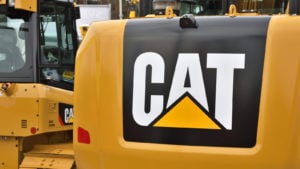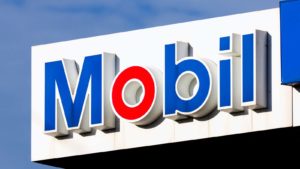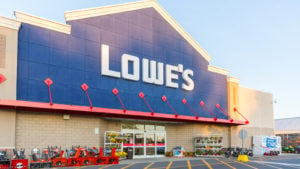Dividend aristocrats are companies that have raised their dividend payments at least once a year for the past 25 years. Many of these names move on to become dividend kings that have increased payouts for 50 consecutive years. Investors who want sustainable passive income as well as capital appreciation usually look at such dividend stocks, especially in volatile markets.
According to the U.S. Bureau of Labor Statistics, producer prices in 2021 saw the greatest year-over-year (YOY) increase on record at 9.7%. Meanwhile, consumer prices soared 7%, the highest rate in four decades. In a period of rising inflation, investors have their eyes on the reliability of dividend stocks to get them through a volatile stock market.
Analysts highlight that dividend aristocrats typically offer the safest yields on Wall Street. There are currently around 65 companies that meet the qualifications. Regardless of whether you’re a growth or income investor, there’s a coveted dividend stock that can fit most retail portfolios.
In 2021, Hartford Funds released a report revealing the performance of the S&P 500 with and without dividends since 1930. Metrics show dividend-paying stocks accounted for 41% of the index’s total return over the past nine decades.
Dividends also accounted for an impressive 84% of the index’s total return since 1970. Therefore, you might want to research these shares for your portfolio.
With that information, here are seven dividend aristocrats that could outperform today’s volatile market:
- AbbVie (NYSE:ABBV)
- Caterpillar (NYSE:CAT)
- Exxon Mobil (NYSE:XOM)
- Johnson & Johnson (NYSE:JNJ)
- Lowe’s (NYSE:LOW)
- NextEra Energy (NYSE:NEE)
- Nucor (NYSE:NUE)
Dividend Aristocrats: AbbVie (ABBV)

52 week range: $102.05 – $144.42
Dividend yield: 4%
Pharmaceutical group AbbVie has a strong exposure to immunology and oncology. Humira, its top-selling drug, currently accounts for around half of revenues. But in 2023, AbbVie will lose its U.S. patent exclusivity for Humira, which is prescribed for numerous inflammatory conditions.
Understandably, the imminent development could restrain ABBV stock’s valuation. But the pharma group boasts a strong pipeline of new products. For example, Skyrizi and Rinvoq have seen more than 70% and 80% YOY growth, respectively. Management anticipates the combined sales from both names could surpass Humira’s peak revenue.
Abbvie announced Q4 2021 results on Feb. 2. Revenue surged 7.4% YOY to $14.9 billion. Adjusted diluted earnings per share came in at $5.92 billion, or $3.31 per diluted share, up from $2.92 per diluted share in the prior-year quarter. For 2022, the company forecast its adjusted earnings will grow to at least $14 per share.
With 49 consecutive years of dividend increases, ABBV stock seems to be as reliable as income investments get. The Dividend Aristocrat currently offers a juicy 4% dividend yield.
ABBV stock hovers around $140, up almost 30% over the past 12 months. Shares are also trading at a bargain valuation at just 10 times forward earnings. Its price-to-sales (P/S) ratio stands at 4.5x. The 12-month median price forecast for Abbvie stock stands at $153.
Caterpillar (CAT)

52-week range: $186.98 – $246.69
Dividend yield: 2.2%
Deerfield, Illinois-based Caterpillar manufactures heavy equipment and construction machinery. With its extensive dealer network worldwide, it is one of the most important construction equipment manufacturers worldwide.
Analysts also note Caterpillar is one of the leading names of the next industrial revolution known as the Industry 4.0. The company highlights that the term “stands for the close interaction of the industrial production with modern information and communication technology. While intelligent, digitally networked systems represent the technical basis, enterprises are called upon to implement new products, efficient processes, and innovative business models.”
Caterpillar announced Q4 2021 results on Jan. 28. Revenue increased 23% YOY to $13.8 billion. Adjusted income per share stood at $2.69, compared with $2.12 in the prior-year quarter. Liquidity remained strong, with a cash balance of $9.3 billion at the end of 2021.
During fiscal 2021, the company repurchased $2.7 billion of CAT stock and paid dividends of $2.3 billion. This dividend aristocrat currently yields 2.2%.
It looks like Caterpillar may be on the brink of a multi-year cyclical rally. Full-year earnings of $11.83 per diluted share were the highest in the company’s history.
Wall Street has been excited about the anticipated acceleration in infrastructure spending. As a result, CAT stock has seen significant momentum. However, ongoing supply chain issues have been concerning. In addition, construction sales in China have been sluggish.
CAT changes hands around $200 per share, up 3% over the past 12 months. Shares look attractive at 16.5 times forward earnings and 2.2 times trailing sales. The 12-month median price forecast for Caterpillar stock stands at $241.
Dividend Aristocrats: Exxon Mobil (XOM)

52-week range: $51.62 – $83.08
Dividend yield: 4.4%
Oil major Exxon Mobil has benefited from a solid recovery in demand and rising crude oil prices in recent months. At the start of 2021, prices were around $50. Now, they’re over $90 per barrel. Wall Street has also been excited to hear Exxon plans to increase onshore energy production in the Permian Basin by 25%.
Exxon Mobil issued Q4 2021 results on Feb. 1. Revenue surged 83% YOY to $85 billion. Net income came in at $8.9 billion, or $2.08 per diluted share, compared to a net loss of $20 billion, or a $4.70 loss per diluted share, a year ago.
XOM stock has increased payouts for 39 straight years, and currently generates a 4.3% dividend yield. The company also announced a $10 billion stock buyback plan that should materialize over the next 12 to 24 months.
The stock hit a 52-week high of $83.08 on Feb. 7 and is up 50% over the past year. Shares are trading at 12.4 times forward earnings and 1.2 times trailing sales.
However, the 12-month median price forecast for Exxon Mobil stock stands at $81. Therefore, potential investors could consider waiting for a pullback in XOM shares.
Johnson & Johnson (JNJ)

52-week range: $151.47 – $179.92
Dividend yield: 2.48%
Johnson & Johnson is one of the largest global healthcare conglomerates. It offers a wide range of pharmaceutical drugs, consumer products and medical device. Most recently, its Covid-19 vaccine has received Emergency Use Authorization (EUA) from the U.S. Food and Drug Administration (FDA).
Management announced Q4 2021 results on Jan. 25. Sales increased 10.4% YOY to $24.8 billion. Wall Street noted the consumer health segment was the slowest-growing segment during the quarter, up just 1% YOY.
Meanwhile, adjusted net earnings soared 14.4% YOY to $5.68 billion, or $2.13 per diluted share. These metrics were up from $4.97 billion, or $1.86 per diluted share, in the prior-year quarter.
Recently, J&J announced plans to spin off its slower-growing consumer health business. The company is shifting its focus to its higher-margin pharmaceuticals and medical devices businesses. The pharma business soared 16.5% YOY to $14.3 billion thanks to a $1.6 billion boost from Covid-19 vaccine revenue.
JNJ is a dividend king stock offering a 2.5% yield. In addition, it is one of the only two publicly traded firms with the highest possible AAA credit rating issued by S&P Global (NYSE:SPGI). The other company is Microsoft (NASDAQ:MSFT).
Shares exchange hands around $165 per share, effectively flat over the past 12 months. They are trading at 16.2 times forward earnings and 4.8 times trailing sales. The 12-month median price forecast for Johnson & Johnson stock stands at $180. A potential decline toward $165 would improve the margin of safety.
Dividend Aristocrats: Lowe’s (LOW)

52-week range: $150.84 – $263.31
Dividend yield: 1.4%
Mooresville, North Carolina-based Lowe’s is the nation’s second-biggest home improvement retailer chain by revenue. The group operates around 2,400 home improvement and hardware stores in North America. Its online sales are also growing rapidly.
Lowe released Q3 2021 results on Nov. 17. Revenue increased 2.2% YOY to $22.9 billion. Net earnings came in at $1.9 billion, or $2.73 per diluted share, up from $692 million, or 91 cents per diluted share, in the prior-year quarter. Cash and equivalents ended the period at $6.1 billion.
On the metrics, CEO Marvin R. Ellison remarked, “Our momentum continued this quarter, with U.S. sales comps up nearly 34% on a two-year basis … In the quarter, we drove over 16% growth in Pro and 25% on Lowes.com.”
Over the past two years, the retailer was well-positioned to benefit from the booming housing market. However, in December, seasonally-adjusted home sales declined 3.6%, the most significant single-month drop since May 2020. Now, Wall Street is debating whether such a cooling in house sales or prices could affect stocks like LOW.
LOW stock is priced at $227, up 30% over the past year. Shares are trading at 18.2 times forward earnings and 1.7 times trailing sales. The 12-month median price forecast for Lowe’s stock stands at $282.50.
Nextera Energy (NEE)

52-week range: $68.33 – $93.73
Dividend Yield: 2.1%
Our next entry in this list of dividend aristocrats is Juno Beach, Florida-based NextEra Energy. It is one of the largest utility companies worldwide with 45,500 megawatts of net generating capacity as of March 2020. It is also a leading name in renewable solar and wind energy generation as well as battery storage.
NextEra issued Q4 2021 results on Jan. 25. Revenue soared 15% YOY to $5.05 billion. Adjusted net income stood at $814 million, or 41 cents per share, up from $785 million in the prior-year quarter. Cash and equivalents ended the period at $639 million.
After the announcement, CEO Jim Robo said in an earnings call, “NextEra Energy achieved full year adjusted earnings per share of $2.55, up more than 10% from 2020 … In 2021, we delivered a total shareholder return of more than 23%, significantly outperforming the S&P 500 Utilities Index.”
The utility giant continues to secure new renewable energy development projects, including those involve green hydrogen and water as alternative energy sources. NextEra plans to invest $50 billion to $55 billion in American infrastructure projects through 2022.
Management forecasts double-digit earnings growth in 2022. Profits should also grow at a 6% to 8% annual rate between 2023 and 2025.
NEE changes hands for $74, down 21% year-to-date (YTD). Thus, compared to last year, shares now offer better value at 27.3 times forward earnings and 8.7 times trailing sales. The 12-month median price forecast for Nextera Energy stock stands at $91.
Dividend Aristocrats: Nucor (NUE)

52-week range: $56.08 – $128.81
Dividend yield: 1.7%
Charlotte, North Carolina-based Nucor is the largest steelmaker in North America. It has a diversified product portfolio, including carbon and alloy steel in plates, bars or sheets.
Nucor announced Q4 2021 results on Jan. 27. Revenue surged 97% YOY to $10.36 billion. Net earnings came in at $2.25 billion, or $7.97 per diluted share, compared to $399 million, or $1.30 per diluted share, in the previous year. Cash and equivalents ended the period at $2.76 billion.
Over the past year, the global economic recovery has created strong demand for steel products. Automakers and other industrial buyers continue to support overall steel use.
The Street also expects increased infrastructure spending to boost revenue. In addition, President Joe Biden’s administration has made it a priority to “buy American,” which provides Nucor with a critical competitive advantage.
NUE stock is priced at $117, up 106% over the past 12 months. Shares are trading at 5.7 times forward earnings and 1 times trailing sales. The 12-month median price forecast for Nucor stock stands at $109. Given the recent runup in price, interested readers could wait for a pullback toward $105 before hitting the “buy” button.
On the date of publication, Tezcan Gecgil did not have (either directly or indirectly) any positions in the securities mentioned in this article. The opinions expressed in this article are those of the writer, subject to the InvestorPlace.com Publishing Guidelines.
Tezcan Gecgil has worked in investment management for over two decades in the U.S. and U.K. In addition to formal higher education in the field, she has also completed all 3 levels of the Chartered Market Technician (CMT) examination. Her passion is for options trading based on technical analysis of fundamentally strong companies. She especially enjoys setting up weekly covered calls for income generation.
